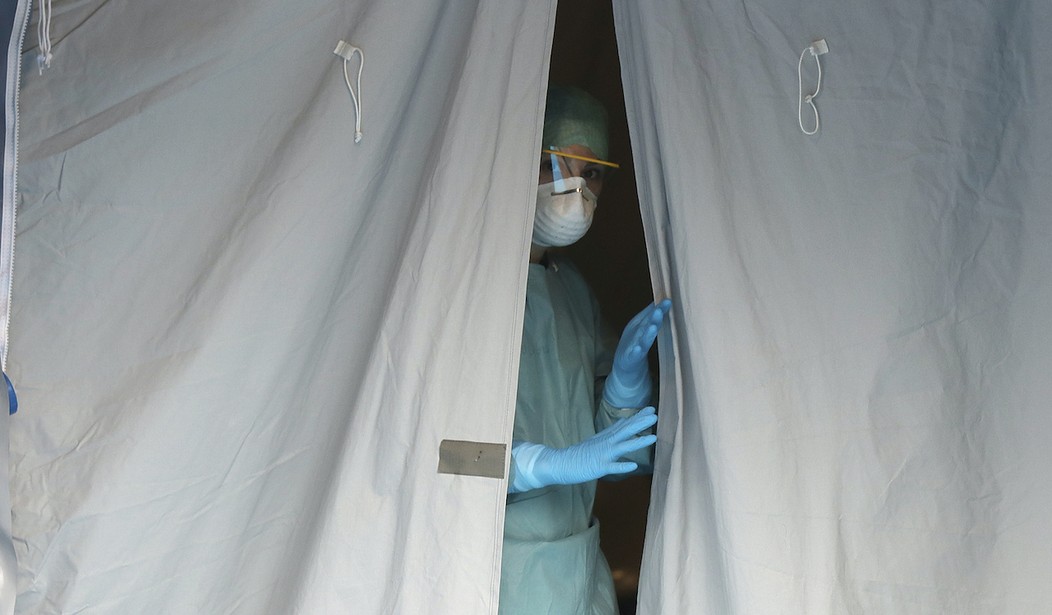The point to bear in mind is that Chile has one of the highest vaccination rates in the world, on par with the UK in terms of first doses administered and well ahead of the United States.

A country with that much immunity in the population shouldn’t be experiencing a wave severe enough to warrant a lockdown. Israel, for instance, is down to an average of 14 cases per day in a country of nine million people. Chile, with a little more than twice Israel’s population, is experiencing nearly 500 times as many daily cases.

The capital, Santiago, is now shut with ICU capacity having reached 98 percent. What’s the difference between Israel and Chile? Part of the answer may have to do with variants: Chile is much closer to Brazil, where the P.1 variant originated, and evidence suggests that P.1 is capable of reinfecting some people who’ve recovered from COVID. Still, at least one study has shown that the mRNA vaccines are highly effective in protecting recipients from P.1.
Which brings us to the other part of the answer. Israel vaccinated its population with Pfizer. Chile has mostly relied on China’s Sinovac vaccine. That one doesn’t use mRNA but rather old-fashioned “inactivated virus” technology. It does appear to provide some protection against serious illness — if you’ve had both doses. But it may not be nearly as good as Pfizer in preventing transmission. And if you’ve only had one dose of it instead of two, you’re at serious risk.
The development, which will alarm authorities elsewhere who are debating how fast to reopen as vaccination campaigns gather steam, comes as Chile’s confirmed daily caseload surged 17% in the past two weeks nationwide and 25% in the Metropolitan region that includes Santiago and is home to half the country’s population…
It has used nearly 23 million vaccines doses so far – 17.2 million of Sinovac’s, 4.6 million of Pfizer/BioNTech’s, and less than 1 million each of AstraZeneca’s< AZN.L> and CanSino’s.
Of 7,716 people confirmed as infected with COVID-19 between Wednesday and Thursday, 73% had not been fully inoculated and 74% were under 49 years old, the health ministry said…
Chile’s health regulator, the ISP, said genome sequencing of infections between December and June had confirmed the Brazilian P1 variant was the most prevalent in the country, and “twice as contagious as the original strain.”
Chilean scientists have been studying Sinovac’s efficacy and coming back with grim results. One found that the vaccine was a respectable 67 percent effective after both doses but just 16 percent effective after one. A separate study found it was three percent effective after a single dose. Compounding the problem for Chile is that the government lifted restrictions in November after a long lockdown because the country had gone many months without a serious wave. Chileans took advantage, traveling and socializing; before long, Brazil’s P.1 variant had arrived in the country and begun to spread. If China’s vaccines are mediocre against common COVID, we can only guess how they might struggle against a more transmissible, somewhat immune-resistant variant like P.1.
Speaking of which, here’s what daily cases look like in Brazil. They’re still drowning in what’s essentially a seven-month-long wave:

A key difference between Chile and Brazil is their vaccination rates. In Chile, 60 percent have had at least one dose, providing some degree of protection (albeit a small one if you’ve had Sinovac). In Brazil, thanks to Bolsonaro’s incompetence and skepticism about COVID, just 25 percent have. Sweden got attention early in the pandemic for following a “no lockdowns” strategy in which the vulnerable were asked to isolate while the young and healthy were invited to carry on more or less as normal. The thinking was that the young would infect each other, producing mild cases and instilling a degree of herd immunity in the population. Then, as cases inevitably declined, it would be safe for the vulnerable to reemerge. Through sheer mismanagement, Brazil has ended up following a variation of that strategy — and yet, 15 months after COVID, there’s still no sign yet of herd immunity setting in there. Daily case counts roll on at sky-high levels. On one day last week they recorded nearly 2,700 deaths.
Maybe there’s a “seasonal effect” driving the numbers up there and in Chile. It’s winter right now in the southern hemisphere, after all. Or maybe the P.1 variant is to blame. If it really is capable of reinfecting people in meaningful numbers then no wonder herd immunity is elusive. But surely a plentiful supply of the superior mRNA vaccines would have changed the complexion of the pandemic in those countries by now. Chile bet on the wrong manufacturer, it seems, while Brazil basically hasn’t bet at all.








Join the conversation as a VIP Member